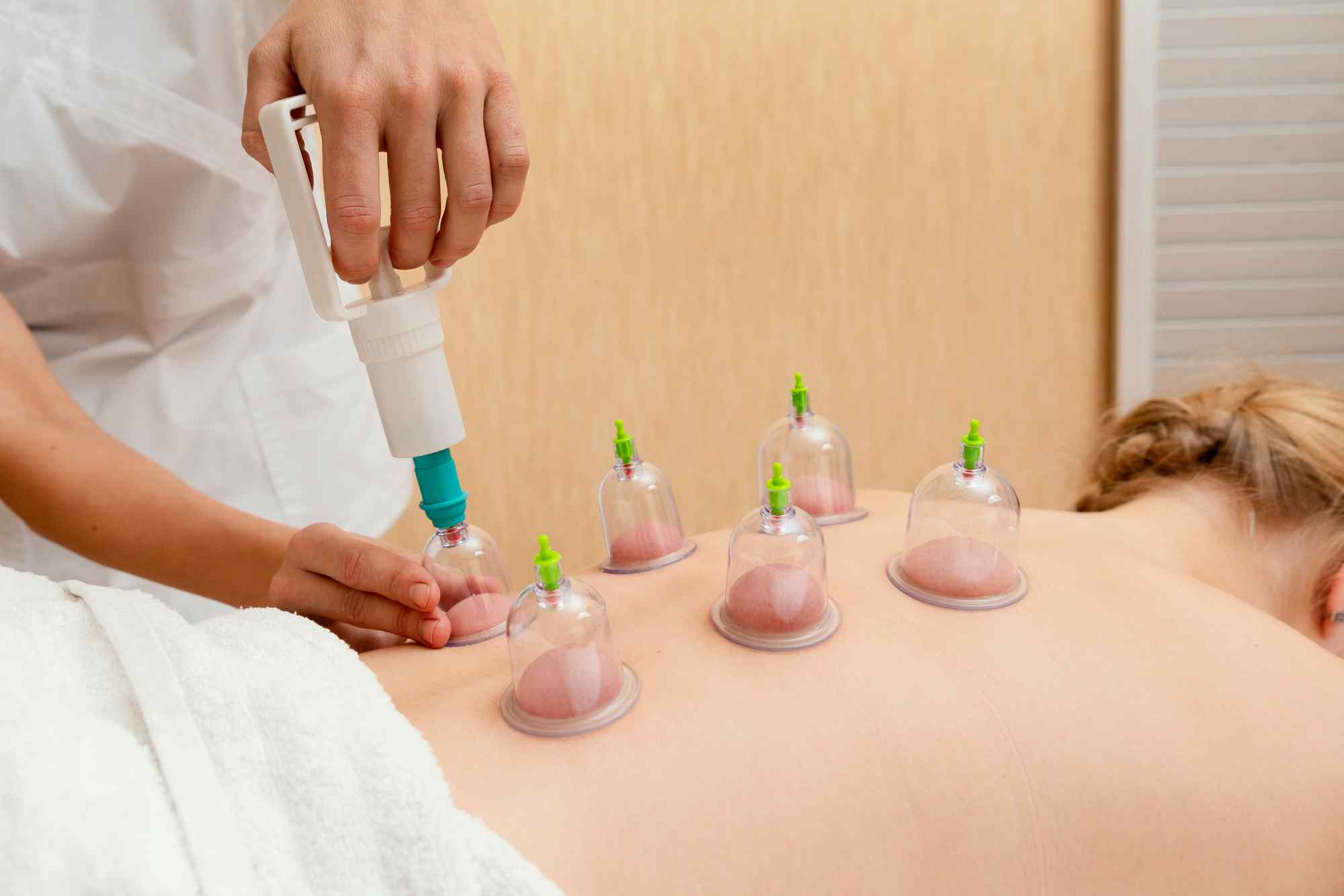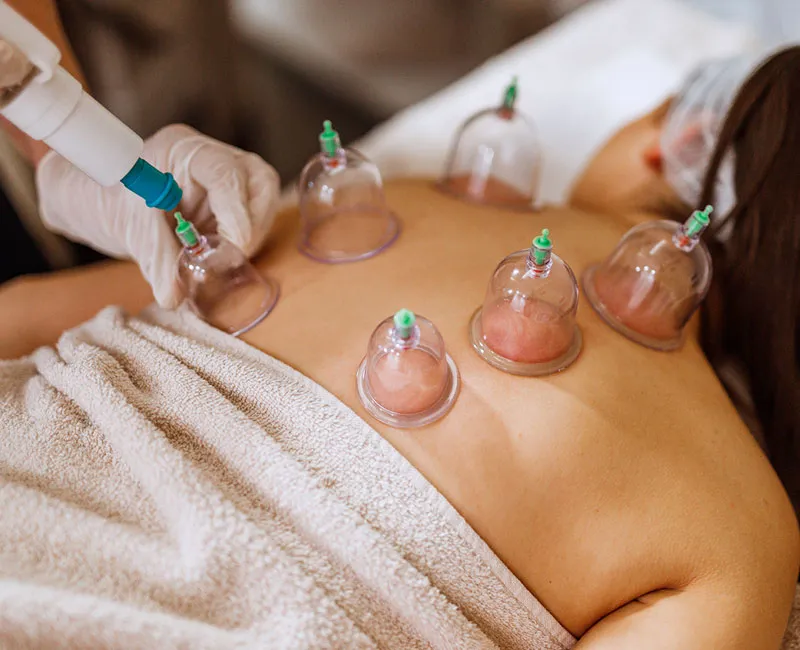
Welcome to the intriguing world of cupping therapy, where ancient healing meets modern wellness. As we delve into the realm of holistic health practices, it's essential to uncover the truth about the potential side effects of this popular treatment. From common reactions to rare adverse effects, understanding the full spectrum of cupping therapy side effects is crucial for making informed decisions about your well-being. With a focus on managing and minimizing any potential risks, as well as exploring the benefits versus the possible drawbacks, this blog aims to provide you with a comprehensive guide to cupping therapy side effects. We'll also touch on the importance of informed consent, safety guidelines, and post-treatment care to ensure a well-rounded understanding of this alternative therapy. So, prepare to uncover the truth about cupping therapy side effects and arm yourself with the knowledge to navigate this fascinating healing modality with confidence.

Common side effects of cupping therapy may include temporary discomfort, bruising, and skin irritation at the site where the cups were placed. These symptoms usually subside within a few days.
Rare side effects of cupping therapy can include infection, burns, and allergic reactions to the materials used in the procedure. It is essential to ensure that the practitioner follows proper hygiene and safety protocols to minimize these risks.
The long-term effects of cupping therapy are not well-documented, but some individuals may experience discolouration or scarring at the cupping sites. Additionally, there is a lack of scientific evidence regarding the long-term benefits or risks associated with repeated or prolonged use of cupping therapy.
To minimize the side effects of cupping therapy, it is essential to communicate with your therapist about any concerns or discomfort you may be experiencing. They can adjust the intensity and duration of the treatment to suit your body's response. Additionally, staying hydrated before and after a cupping session can help reduce the likelihood of side effects such as dizziness or lightheadedness.
If you experience persistent or severe side effects from cupping therapy, it is crucial to seek professional medical advice. This is especially important if you notice skin irritation, blistering, or infection at the site where cups were placed. A qualified healthcare provider can assess your condition and provide appropriate treatment to alleviate any adverse effects.
In some cases, individuals may opt for alternative therapies that pose fewer risks of side effects compared to cupping therapy. These alternatives include acupuncture, massage therapy, or physical therapy. Before trying a new treatment method, it's advisable to consult with a healthcare professional who can guide you towards options that best suit your health needs.
Before undergoing cupping therapy, it is important to consider any existing health conditions. Certain individuals with skin conditions, such as eczema or psoriasis, should avoid cupping therapy due to the risk of aggravating their condition. Additionally, individuals who are prone to blood clots or have a history of deep vein thrombosis should consult with a healthcare provider before considering cupping therapy.
When selecting a practitioner for cupping therapy, it is crucial to choose a certified and experienced therapist. This ensures that the procedure is conducted safely and effectively. Always inquire about the therapist's credentials and experience in performing cupping therapy before proceeding with the treatment.
It is highly recommended to discuss your interest in cupping therapy with your healthcare provider before scheduling an appointment. Your healthcare provider can assess your medical history and provide personalized advice regarding the potential risks and benefits of cupping therapy based on your health status.
Cupping therapy has been praised for its potential benefits, including pain relief, improved blood circulation, and relaxation. However, it's important to also consider the possible risks associated with this alternative treatment method.
When comparing the benefits and risks of cupping therapy, research findings have shown that while some individuals may experience positive outcomes such as reduced muscle tension and improved overall well-being, others may encounter side effects such as skin irritation, bruising or dizziness.
It is essential to weigh both the potential benefits and risks before deciding whether to pursue cupping therapy. Consulting with a qualified healthcare professional can help individuals make an informed decision based on their specific health status and any existing medical conditions.
Informed consent is a critical aspect of receiving cupping therapy, as it allows the patient to fully understand the potential risks and benefits associated with this treatment. It also ensures that the individual has the autonomy to make an informed decision about whether or not to proceed with cupping therapy. From a legal and ethical standpoint, obtaining informed consent is essential for protecting both the patient and the practitioner.
When creating an informed consent form for cupping therapy, several key components should be included. These may encompass a detailed explanation of what cupping therapy entails, including any potential side effects or negative outcomes that could arise from the treatment. Additionally, information about alternative treatments or options should be provided to allow patients to make a well-informed choice regarding their care.
Furthermore, the informed consent form should outline any specific contraindications or circumstances in which cupping therapy may not be appropriate for certain individuals. This helps ensure that patients with pre-existing health conditions or other factors that could increase their risk of experiencing adverse effects are aware of these considerations before undergoing treatment.
When undergoing cupping therapy, it is essential to ensure that safety measures are in place to minimize any potential risks or side effects. This includes ensuring that the therapist performing the cupping procedure has undergone proper training and certification. It is important for individuals seeking cupping therapy to verify the qualifications of their chosen therapist and inquire about their training background.
Additionally, regulatory standards for cupping therapy safety should be adhered to by both therapists and establishments offering this service. These standards are put in place to ensure that the equipment used during cupping therapy meets certain safety requirements and that proper hygiene and sanitation practices are followed. Seeking treatment from a facility or practitioner who follows these regulatory standards can help mitigate any potential adverse effects of cupping therapy.
Ultimately, prioritizing safety guidelines when undergoing cupping therapy plays a crucial role in minimizing risks and negative outcomes. By being proactive in verifying the credentials of therapists and ensuring adherence to regulatory standards, individuals can feel more confident about the safety of their chosen treatment option.

There are numerous misconceptions surrounding the side effects of cupping therapy, leading to a significant amount of misinformation. It is important to debunk these myths and focus on evidence-based facts when discussing the potential negative effects of this alternative therapy.
One common myth is that cupping therapy always leaves behind severe bruises and marks. In reality, while some bruising may occur due to the suction effect of the cups, it is typically not as extreme as portrayed in popular media. Additionally, these marks tend to fade within a few days and do not cause any long-term harm.
It's crucial to address these misconceptions and provide accurate information about the actual risks associated with cupping therapy. By separating fact from fiction, individuals can make informed decisions regarding their health and well-being without being misled by false claims.
After undergoing cupping therapy, it is important to follow some aftercare tips to ensure a smooth recovery. Make sure to keep the cupped areas clean and dry to prevent any infection. Avoid exposing the treated skin to extreme temperatures such as hot showers or direct sunlight for at least 24 hours. Additionally, it is advisable to drink plenty of water to help flush out toxins released during the therapy.
It's essential to monitor the cupped areas for any signs of adverse effects in the hours and days following the treatment. Look out for excessive pain, swelling, redness, or unusual bruising that does not subside over time. If you notice any concerning symptoms or are unsure about your recovery progress, don't hesitate to seek medical attention promptly.
In case of persistent discomfort or unexpected side effects beyond normal healing reactions like mild soreness, consult with a healthcare professional immediately. They can assess your condition and provide appropriate guidance based on your situation. It's always better to be cautious and proactive when it comes to post-cupping care.
Recent studies have provided valuable insights into the potential side effects of cupping therapy. These studies have identified various adverse effects that can occur as a result of this alternative treatment method. Researchers have documented cases of skin irritation, burns, and bruising as common side effects experienced by individuals undergoing cupping therapy.
Clinical trials and observations have further highlighted the risks associated with cupping therapy. In some instances, patients have reported dizziness, lightheadedness, and nausea following a session of cupping therapy. Additionally, there have been reports of muscle soreness and discomfort after the application of cups on specific areas of the body.
Experts in the field have emphasized the importance of understanding these potential side effects before opting for cupping therapy. They advise individuals to seek guidance from qualified practitioners who can assess their suitability for this treatment and minimize any adverse outcomes. Furthermore, both practitioners and patients need to be aware of these risks to ensure safe and effective implementation of cupping therapy.
At Prime Chiro, we understand the importance of finding the best chiropractor near you in Lansvale NSW and nearby areas of Fairfield, Liverpool, and Cabramatta. Our team of experienced chiropractors is dedicated to providing top-quality chiropractic care and consultation services to individuals in the local community. Whether you are seeking relief from chronic pain, recovering from an injury, or looking to improve your overall well-being, Prime Chiro is here to help. Contact us today to schedule a consultation and take the first step towards a healthier, pain-free life.
Cupping therapy is an alternative medicine practice that involves placing cups on the skin to create suction. It is believed to help with pain, inflammation, blood flow, and relaxation.
Yes, there can be side effects of cupping therapy. These may include temporary skin discolouration, mild discomfort, burns, and rare instances of infection. It is important to consult with a qualified practitioner and follow proper safety precautions.
The side effects of cupping therapy are usually temporary and may last for a few days to a couple of weeks. Skin discolouration typically fades within a week or two, while any discomfort or minor burns should subside within a few days.
Cupping therapy may not be suitable for everyone. It is generally advised to avoid cupping therapy if you have certain medical conditions such as hemophilia, or skin ulcers, or are pregnant. It is best to consult with a healthcare professional before undergoing cupping therapy.
While cupping therapy is generally considered safe when performed by a qualified practitioner, there have been rare cases of serious complications such as skin infections or burns. It is important to choose a reputable practitioner and follow proper safety guidelines to minimize any potential risks.
Understanding and managing the side effects of cupping therapy is crucial for safe and effective treatment. This blog provides insights into common and rare side effects, tips for minimizing them, and alternative therapies. It also emphasizes the importance of informed consent, safety guidelines, and post-cupping care. Additionally, it discusses the benefits versus risks of cupping therapy and provides research insights and expert opinions on the topic.